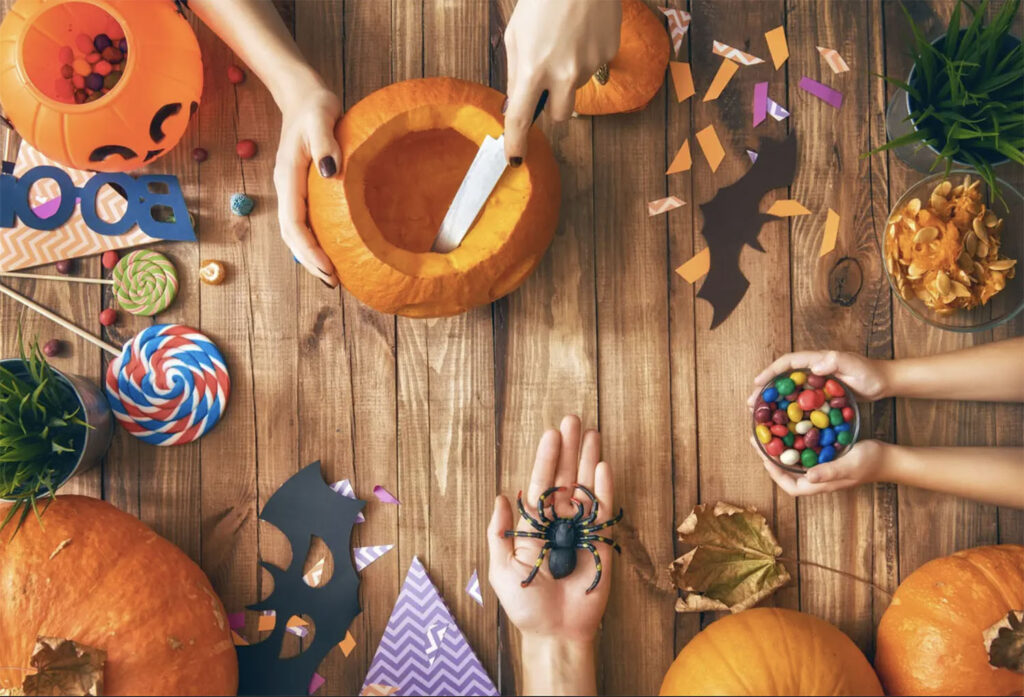By Elise Nam, Alliance Intern from Barnard College ‘24
Growing up in Seoul, South Korea, Halloween was not celebrated as it is the US. Because I attended a British school, we celebrated by dressing up and decorating the school, but trick-or-treating after school didn’t exist. When I moved to the US, I was introduced to elaborately decorated houses, free-for-all trick-or-treating around my neighborhood, and Halloween parties. I was allowed to eat one piece of candy per day after Halloween, but eventually, as it did annually, my forgotten and old candy sat in the back of the cabinet.
Here’s a spooky fact: a study performed by Hubbub, an environmental group from the UK, found that 83% of costumes are made of oil-based plastics – which equates to 83 million plastic soda bottles – and most end up in a landfill. In addition to costumes, a 2021 survey performed by the National Retail Foundation found that spending on plastic-wrapped candy, costumes, and decorations was expected to reach $10.14 billion. There are ways we can decrease consumerism while enjoying the spooky, treat-filled season!
Halloween wasn’t always so environmentally challenging. Trick-or-treating began gaining popularity in the 1930s. Back then, costumes were usually homemade and treats were candied apples or popcorn balls.
So when did Halloween become about consumerism and maximizing profit? In the 1950s Hershey and Nestlé “began to license and manufacture costumes of characters from popular films or television shows,” writes Marketplace. These were the beginnings of Halloween as we know it today.
The growth of Halloween consumerism isn’t slowing down either. According to data provided to Retail Dive from DataWeave, a retail data and pricing analytics firm, Home Depot more than doubled its overall Halloween and fall assortment this year to 861 products during September and October, compared to 418 in the same period last year.
Halloween can be more fun, and perhaps a little less scary, with a few sustainable actions.
Tips for a Sustainable Halloween:
- Buy second-hand – Try thrifting your costumes and decorations. You can also DIY your own using recycled materials.
- Organize a Halloween costume swap – A halloween costume swap works just like a clothing swap. Set up a swap in your town, campus, or school and exchange an item!
- Borrow from friends – Just because your friend doesn’t want to wear the same costume again doesn’t mean you can’t wear theirs!
- Don’t use polyester spider webs – Wildlife often gets entangled in these webs which can cause injuries and death. Instead try using yarn to create a web display.
- Choose natural face paint – Halloween makeup can contain PVC, which is a type of plastic. Try opting for an eco-friendly paint instead.
- Opt for candy in cardboard boxes – Plastic is less-recyclable than cardboard.
- Reuse bags for trick-or-treating – Use recycled bags, go old-school with a pillow case, or decorate and create your own with recycled materials.
- Buy alternative treats – Try visiting a zero waste store to look for bulk candy. Look for fair-trade and organic chocolate and treats, and try to avoid palm oil, additives, and gelatin.
- Throw an eco-friendly Halloween party – Use compostable plates and cutlery and make low-waste snacks and decorations.
- Compost your pumpkins – Approximately 1 billion pumpkins go to landfills where they produce methane and other emissions, says Hubbub. Composting is an easy way to reduce greenhouse gas emissions. Don’t forget to roast your pumpkin seeds!
- Proper recycling – There are a few companies working to fight Halloween waste. Terracycle and Rubicon have recycling programs for the tricky-to-recycle wrappers.

